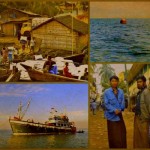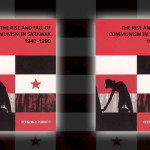
Kyoto Review of Southeast Asia. Issue 7. States, People, and Borders in Southeast Asia. September 2006
Many borderlands in Southeast Asia—in southern Thailand, East Timor, Papua New Guinea, Sulawesi, Aceh, southern Philippines, Myanmar—have become violent. In the peripheral spaces of Southeast Asian nation-states, people flee from horrific acts of violence committed by state forces, military units, border guards, police, vigilante groups, and armed guerrillas. In these violent borderlands, civilians are squeezed between military and paramilitary state forces on the one hand and armed guerrillas on the other (Amporn, this issue). Communal violence escalates in places where people of different ethnicities and confessions had learned to live as peaceful neighbors. People are suspected of being military informers or helping hands of armed opposition groups, and the consequent disappearances, abductions, tortures, and killings contribute to an atmosphere of fear. Nearly always, however, conflicts that are dubbed ethnic or religious reveal themselves to be conflicts of resource competition, the violence sparked by the huge interests at stake in the illegal economy defended by powerful groups within the nation-state far from the eyes and “civilization” of the center (Wadley and Eilenberg, this issue). As we will see in the features of this issue, agencies of the state are eager participants in the border economy as well, and their policing of the border helps to sustain a profitable situation for the exploitation of migrant labor. [READ MORE]
ISSUE 7— ARTICLES
|
|
 States, Peoples, and Borders in Southeast Asia States, Peoples, and Borders in Southeast Asia
|
Alexander Horstmann
|
 The Indonesian Migrants of Davao and Cotabato The Indonesian Migrants of Davao and Cotabato
|
Macario D. Tiu
|
 From Adek to Mo’ji: From Adek to Mo’ji:
Identities of Southern Thai People and Social Realities
|
Amporn Marddent
Walailak University
Thailand
|
 Working with Spanish Colonial Records and Archives: Working with Spanish Colonial Records and Archives:
Reflections and Practicalities
|
Oona Thommes Paredes
Arizona State University
|
 Gendered Crossings: Gendered Crossings:
Gender and Migration in Muslim Communities in
Thailand’s Southern Border Region
|
Michiko Tsuneda
University of Wisconsin-Madison
|
 Guns and Gas in Southeast Asia: Guns and Gas in Southeast Asia:
Transnational Flows in the Burma-Bangladesh Borderland
|
Willem van Schendel
University of Amsterdam
|
 Vigilantes and Gangsters in the Borderland Vigilantes and Gangsters in the Borderland
of West Kalimantan, Indonesia
|
Reed L. Wadley and Michael Eilenberg
|
ISSUE 7— BOOK REVIEWS
|
|
|
 Changing Borders and Identities in the Kelabit Highlands: Anthropological Reflections on Growing up in a Kelabit Village Near the International Border Changing Borders and Identities in the Kelabit Highlands: Anthropological Reflections on Growing up in a Kelabit Village Near the International Border
Poline Bala, Sarawak, Malaysia / The Institute for East Asian Studies, University of Malaysia Sarawak
(Dayak Studies Contemporary Society Series, No. 1) / 20
|
Matthew H. Amster
|
|
 The Rise and Fall of Communism in Sarawak 1940-1990 The Rise and Fall of Communism in Sarawak 1940-1990
V.L. Porritt, Melbourne / Monash Asia Institute / 2004
|
James Chin
Institute of East Asian Studies
Universiti Malaysia Sarawak
|
|
 Research Trends on Southeast Asian Sea Nomads Research Trends on Southeast Asian Sea Nomads
|
Cynthia Chou
Institute of Cross-cultural and Regional Studies–Language, Religion and Society
University of Copenhagen
|
|
 Beginning to Remember: The Past in Indonesian Present Beginning to Remember: The Past in Indonesian Present
Singapore and Seattle: Singapore University Press, with University of Washington Press, 2005
|
Rommel Curaming
|
|
 The Writing on the Wall: Marking the Limits of Ethnicity on China’s Borders The Writing on the Wall: Marking the Limits of Ethnicity on China’s Borders
Adapted from Song and Silence: Ethnic Revival on China’s Southwest Borders
Sara L. M. Davis. Copyright (c) 2005 Columbia University Press. Reprinted with the permission of the publisher.
|
Sara L.M. Davis
|
VISIT OUR ARCHIVES—















